Hyundai Kona vs Tesla Model S – Which one offers the better deal?
Compare performance, boot capacity, efficiency and price at a glance.
Find out which car is the better choice for you – Hyundai Kona or Tesla Model S?
Costs and Efficiency:
Price and efficiency are key factors when choosing a car – and this is often where the real differences emerge.
Hyundai Kona has a decisively advantage in terms of price – it starts at 23100 £, while the Tesla Model S costs 94300 £. That’s a price difference of around 71220 £.
In terms of energy consumption, the advantage goes to the Hyundai Kona: with 14.60 kWh per 100 km, it’s slightly more efficient than the Tesla Model S with 16.80 kWh. That’s a difference of about 2.20 kWh.
As for range, the Tesla Model S performs noticeable better – achieving up to 744 km, about 230 km more than the Hyundai Kona.
Engine and Performance:
Power, torque and acceleration say a lot about how a car feels on the road. This is where you see which model delivers more driving dynamics.
When it comes to engine power, the Tesla Model S has a clearly edge – offering 1020 HP compared to 218 HP. That’s roughly 802 HP more horsepower.
In acceleration from 0 to 100 km/h, the Tesla Model S is convincingly quicker – completing the sprint in 2.10 s, while the Hyundai Kona takes 7.80 s. That’s about 5.70 s faster.
In terms of top speed, the Tesla Model S performs distinct better – reaching 322 km/h, while the Hyundai Kona tops out at 210 km/h. The difference is around 112 km/h.
Space and Everyday Use:
Whether family car or daily driver – which one offers more room, flexibility and comfort?
Both vehicles offer seating for 5 people.
In curb weight, Hyundai Kona is significantly lighter – 1370 kg compared to 2092 kg. The difference is around 722 kg.
In terms of boot space, the Tesla Model S offers clearly more room – 799 L compared to 466 L. That’s a difference of about 333 L.
In maximum load capacity, the Tesla Model S performs clearly perceptible better – up to 1828 L, which is about 528 L more than the Hyundai Kona.
When it comes to payload, Hyundai Kona minimal takes the win – 490 kg compared to 442 kg. That’s a difference of about 48 kg.
Who wins the race?
The Tesla Model S proves to be leaves the rival little chance and therefore becomes our DriveDuel Champion!
Tesla Model S is the better all-rounder in this comparison.
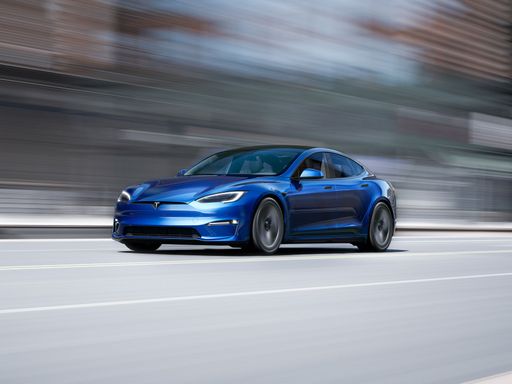 @ Tesla, Inc.
@ Tesla, Inc.
Tesla Model S
Hyundai Kona
The Hyundai Kona wears its personality on the outside with bold styling and sprightly handling that turns city driving into something a little more fun than a commute. It blends practical space, modern tech and sensible running costs into a compact, stylish package — a smart pick if you want flair without paying luxury prices.
details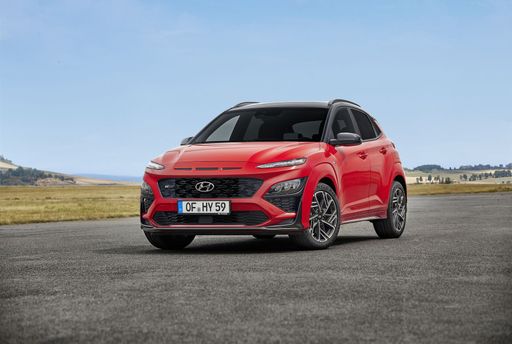 @ Hyundai Motor Company
@ Hyundai Motor Company
 @ Hyundai Motor Company
@ Hyundai Motor Company
 @ Hyundai Motor Company
@ Hyundai Motor Company
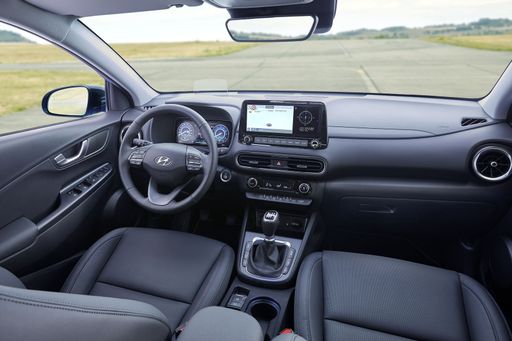 @ Hyundai Motor Company
@ Hyundai Motor Company
Tesla Model S
The Model S continues to set the standard for luxury electric vehicles, seamlessly blending performance with cutting-edge technology. Its sleek design and spacious interior provide an unparalleled driving experience, making it an ideal choice for modern enthusiasts. With features that emphasize both safety and sustainability, the Model S showcases the future of automotive innovation.
details @ Tesla, Inc.
@ Tesla, Inc.
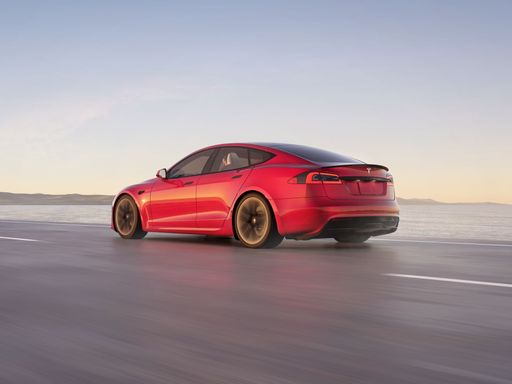 @ Tesla, Inc.
@ Tesla, Inc.
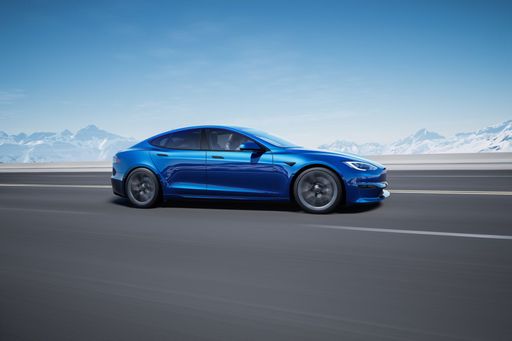 @ Tesla, Inc.
@ Tesla, Inc.
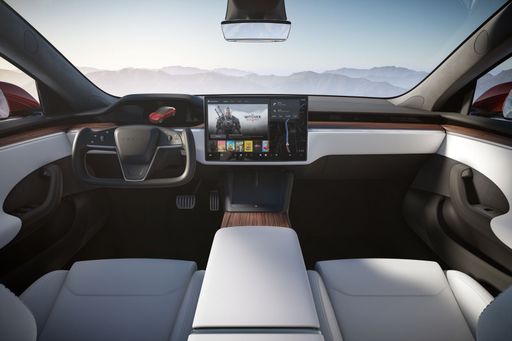 @ Tesla, Inc.
@ Tesla, Inc.
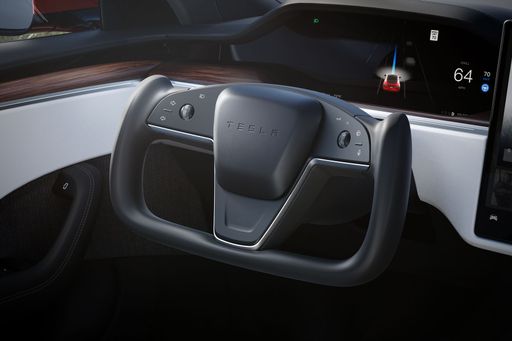 @ Tesla, Inc.
@ Tesla, Inc.
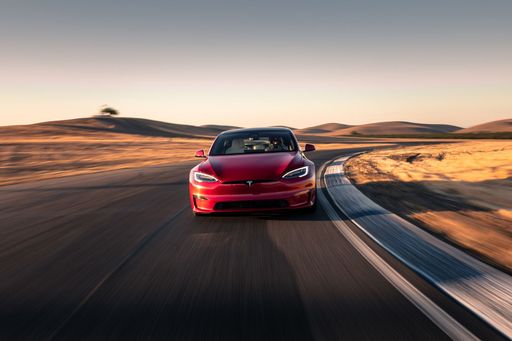 @ Tesla, Inc.
@ Tesla, Inc.
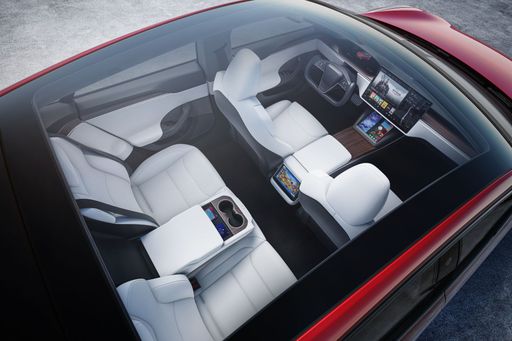 @ Tesla, Inc.
@ Tesla, Inc.
 @ Hyundai Motor Company
@ Hyundai Motor Company
|
 @ Tesla, Inc.
@ Tesla, Inc.
|
|
|
|
Costs and Consumption |
|
|---|---|
|
Price
23100 - 41600 £
|
Price
94300 - 102800 £
|
|
Consumption L/100km
4.6 - 7 L
|
Consumption L/100km
-
|
|
Consumption kWh/100km
14.6 - 16.8 kWh
|
Consumption kWh/100km
16.8 - 18 kWh
|
|
Electric Range
377 - 514 km
|
Electric Range
611 - 744 km
|
|
Battery Capacity
1.3 - 65.4 kWh
|
Battery Capacity
-
|
|
co2
0 - 163 g/km
|
co2
0 g/km
|
|
Fuel tank capacity
38 - 47 L
|
Fuel tank capacity
-
|
Dimensions and Body |
|
|---|---|
|
Body Type
SUV
|
Body Type
Hatchback
|
|
Seats
5
|
Seats
5
|
|
Doors
5
|
Doors
5
|
|
Curb weight
1370 - 1773 kg
|
Curb weight
2092 - 2197 kg
|
|
Trunk capacity
466 L
|
Trunk capacity
799 L
|
|
Length
4350 - 4385 mm
|
Length
5021 mm
|
|
Width
1825 mm
|
Width
1987 mm
|
|
Height
1580 - 1585 mm
|
Height
1431 mm
|
|
Max trunk capacity
1300 L
|
Max trunk capacity
1828 L
|
|
Payload
420 - 490 kg
|
Payload
432 - 442 kg
|
Engine and Performance |
|
|---|---|
|
Engine Type
Electric, Petrol, Full Hybrid
|
Engine Type
Electric
|
|
Transmission
Automatic, Manuel
|
Transmission
Automatic
|
|
Transmission Detail
Reduction Gearbox, Manual Gearbox, Dual-Clutch Automatic
|
Transmission Detail
Reduction Gearbox
|
|
Drive Type
Front-Wheel Drive, All-Wheel Drive
|
Drive Type
All-Wheel Drive
|
|
Power HP
115 - 218 HP
|
Power HP
670 - 1020 HP
|
|
Acceleration 0-100km/h
7.8 - 11.9 s
|
Acceleration 0-100km/h
2.1 - 3.2 s
|
|
Max Speed
162 - 210 km/h
|
Max Speed
240 - 322 km/h
|
|
Torque
200 - 265 Nm
|
Torque
-
|
|
Number of Cylinders
3 - 4
|
Number of Cylinders
-
|
|
Power kW
85 - 160 kW
|
Power kW
493 - 750 kW
|
|
Engine capacity
998 - 1598 cm3
|
Engine capacity
-
|
General |
|
|---|---|
|
Model Year
2024 - 2025
|
Model Year
2025
|
|
CO2 Efficiency Class
A, D, C, E, F
|
CO2 Efficiency Class
A
|
|
Brand
Hyundai
|
Brand
Tesla
|
Is the Hyundai Kona offered with different drivetrains?
Available configurations include Front-Wheel Drive or All-Wheel Drive.
The prices and data displayed are estimates based on German list prices and may vary by country. This information is not legally binding.
